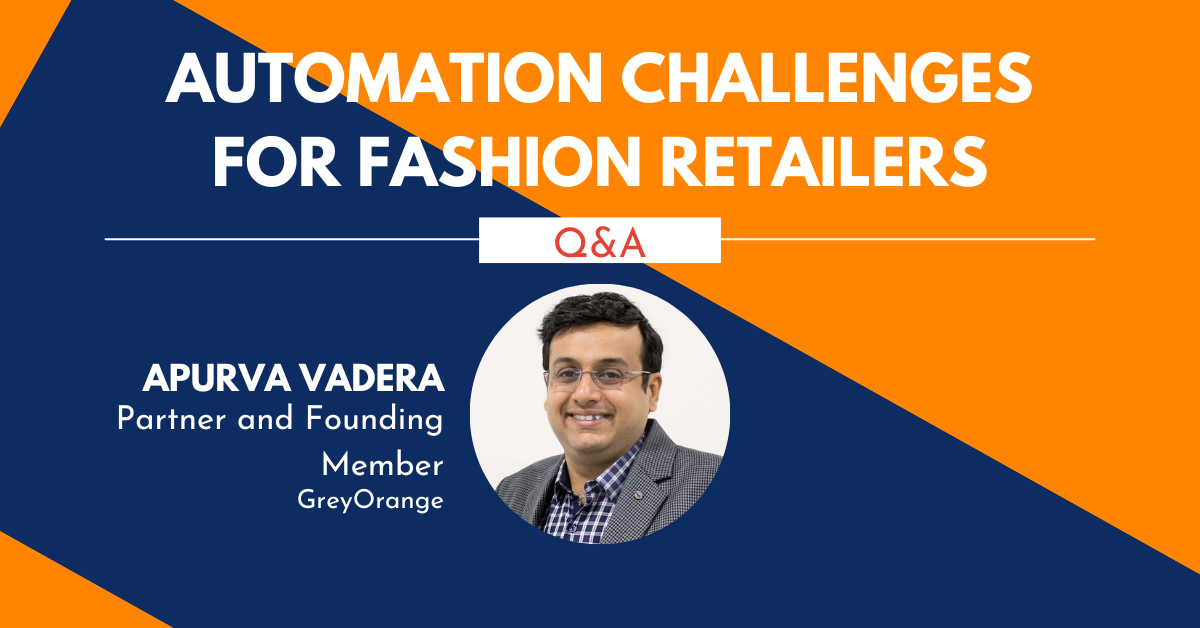


We sat down with Apurva Vadura, GreyOrange partner and founding member, to pick his brain about some of the key challenges fashion retailers are facing in the warehouse today. He shares how some of the leading retailers are driving efficiency in their fulfillment and returns management processes.
We operate more than 25 fashion sites, including more than 10 of the largest fashion retailers in the world across North America, Europe and Asia.
Fun fact: GreyOrange operates the largest robotic automated fashion site in the world. It’s one single field that spans 1.5 million square feet, an omnichannel fulfillment center that manages four brands and returns. Last year, the site processed more than 50 million units, and it can handle more than 250,000 SKUs on a daily basis.
First and foremost, everything in fashion is piece-picking. Their inventory profile is so broad and so deep. The customer mentioned earlier introduces 300 SKUs every day. There’s no way to predict popularity or velocity – you don’t know what’s selling or not selling. So, as a picking engine or as an orchestration engine, you don’t have any idea about what SKUs are going to come the next day.
Second, the SKU range is so wide that you manage goods ranging from small, flat parcels to goods on hangers. Designing an automation solution that can encapsulate all this together in one single field across channels and brands is extremely difficult.
Finally, on top of all that, 40% of inventory is returns. When you consider all of these factors, most fashion automation today is handled in small pieces, each with different automation. It’s completely broken.
GreyOrange has one of the only automation platforms that can manage all different types of inventory, from flats to goods on hangers to shoes, in one single automated field.
RELATED READ: How to Achieve Intelligent Inventory Allocation and Become a Fashion Retail Omnichampion in 2024
Typically, a fashion warehouse would employ so many people to pick through this kind of inventory. In today’s environment, forget about retention, it’s difficult for fashion companies even to find labor.
Older systems are built for storage, where you would build something like eight totes back-to-back and SKUs in all of them. Imagine when you have 250,000 SKUs and don’t know the popularity of each – and you have to dig through seven totes to pick the last one. That is one of the most inefficient ways of processing fashion units.
GreyOrange automation is completely flexible, 100% autonomous and movable. And that’s why we run more than 25 sites across 10 of the largest fashion retailers today. Ten to 15 years ago, there were no other options. That’s why people resorted to automation geared towards storage. Today, flexible automation is the only solution that makes sense for an industry like fashion.
At our largest site, we actually have an SLA of less than 36 minutes to pick an online order. The moment an order is dropped in, in 36 minutes it has to be picked, and in another 30 minutes it should be packed and shipped out. That’s the kind of SLAs we’re dealing with.
Oh absolutely. We have a 99.9% pick-before-time or, as we call it, pick-breach percentage.
One of the key value propositions of GreyMatter [Multiagent Orchestration Platform] is that we fundamentally adhere to the customer promise. With GreyMatter, we have less than 0.1% breach in these pick-before-time SLAs.